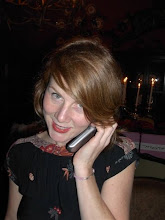 Back in 1999 at the beginning of my magazine career, I interviewed Rebel without a Cause screenwriter Stewart Stern for Seattle magazine, where I was an editor. In the spirit of today's Cinemode, Rebel without a Cause, I thought it would be fun to dig up this lost interview after all these years and post it on On This Day In Fashion. The short Q&A with Stern centers around how I'd recently discovered that the screenwriter—the nephew of Paramount Pictures founder Adoph Zukor and actress Mary Pickford, and first cousins to the Loews, who ruled MGM—had traded in the jungles of Hollywood for the wilds of Seattle's Woodland Park Zoo, where he was a hiding out as a docent with the gorillas. Stewart was a peach, and we talked in his garden and living room for about three hours. I didn't ask him about fashion or style, but he talked about James Dean and surprised me with a cool Jim Morrison story and another about his aunt, the legendary actress and "It" girl, Mary Pickford.
Back in 1999 at the beginning of my magazine career, I interviewed Rebel without a Cause screenwriter Stewart Stern for Seattle magazine, where I was an editor. In the spirit of today's Cinemode, Rebel without a Cause, I thought it would be fun to dig up this lost interview after all these years and post it on On This Day In Fashion. The short Q&A with Stern centers around how I'd recently discovered that the screenwriter—the nephew of Paramount Pictures founder Adoph Zukor and actress Mary Pickford, and first cousins to the Loews, who ruled MGM—had traded in the jungles of Hollywood for the wilds of Seattle's Woodland Park Zoo, where he was a hiding out as a docent with the gorillas. Stewart was a peach, and we talked in his garden and living room for about three hours. I didn't ask him about fashion or style, but he talked about James Dean and surprised me with a cool Jim Morrison story and another about his aunt, the legendary actress and "It" girl, Mary Pickford.It took me hours to find this little gem—probably the fourth or fifth story I ever published—on an old disk, and now I'm determined to find the mini-cassette tape I recorded the whole thing on. I don't remember exactly what was on that tape (lots of family bits and a conversation about the homosexual undertones of Rebel comes to mind), I only remember that as a young writer I was devastated at all the words I had to cut. When (if) I ever find that tape, I'll maybe transcribe it and post the whole long-lost interview. In the meantime, this conversation is what made the cut for publication:








